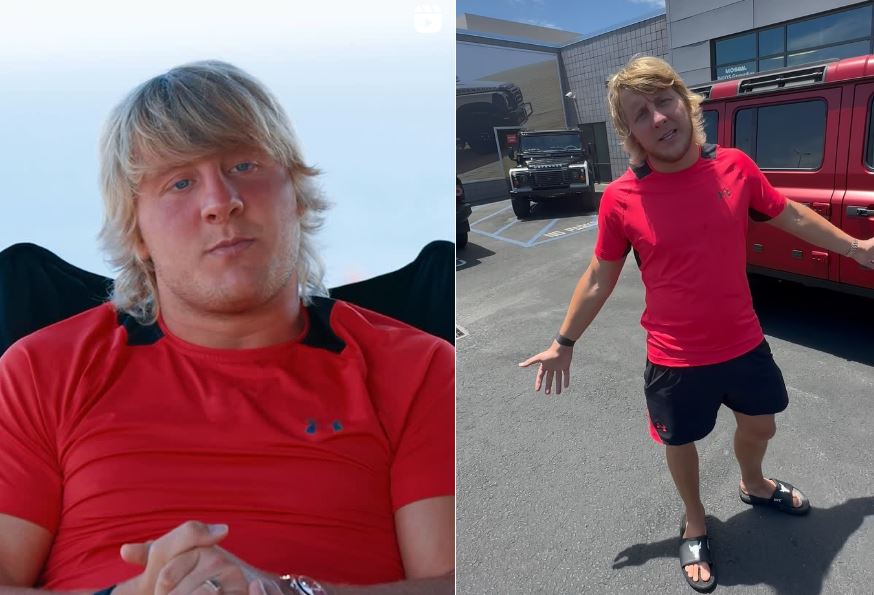
Because of how quickly and drastically the numbers change, Paddy Pimblett’s weight has become one of the most talked-about aspects of his career. Few athletes possess the ability to precisely add and drop mass, a skill that has become a part of his identity both inside and outside the UFC octagon.
Pimblett started his training around 190 pounds in the lead-up to UFC 314, which would have put him squarely in middleweight territory if not for the drastic change that would occur later. In order to reach his goal of 156 pounds for the lightweight division, he had to lose nearly 40 pounds in a matter of weeks. This process required careful planning, unwavering discipline, and the kind of mental toughness that is remarkably similar to that of top endurance athletes overcoming their most difficult ascents.
Paddy Pimblett – Key Facts
| Attribute | Details |
|---|---|
| Full Name | Patrick Mark Pimblett |
| Nickname | The Baddy |
| Date of Birth | 3 January 1995 |
| Birthplace | Huyton, Liverpool, England |
| Height | 1.78 m (5 ft 10 in) |
| Current Fight Weight | 70–71 kg (155–156 lbs) |
| Walk-Around Weight | Up to 90 kg (198–200 lbs) |
| UFC Division | Lightweight (2018–present) |
| Notable Past Weights | Bantamweight (2012–2013), Featherweight (2014–2017) |
| Spouse | Laura Gregory (m. 2023) |
| Professional Record | 23 wins – 3 losses |
| Championships | Former Cage Warriors Featherweight Champion |
| UFC Rankings | #9 in UFC Lightweight Division (as of July 2025) |
Two weeks prior to the fight, he had weighed 175 pounds. He weighed 170 pounds after two days out. He then lost 13 pounds in less than 48 hours thanks to the incredibly effective water cut, which dropped him to 157 pounds the night before he stepped on the scale. Such a cut would be extremely exhausting for many fighters, but Pimblett maintains that it was “one of my easiest,” which is evidence of years of honing the technique with his trusted group.
The recovery is just as spectacular. Pimblett frequently gains over 30 pounds in the 24 hours following weigh-ins, making him considerably bigger than the majority of lightweight opponents when he enters the cage at around 190 pounds. In grappling situations, where his increased bulk and strength are instantly apparent, this size advantage is especially helpful.
Critics contend that his longevity may eventually suffer as a result of these fluctuations. Extreme weight cycling, according to nutritionists, can affect brain hydration, stress the kidneys, and decrease recovery capacity. However, Pimblett presents it as a component of his brand: the unrepentant fighter who relishes life in between fights and then sharpens his focus when camp starts. Fans, many of whom value witnessing the less polished, more human side of a top athlete, find his candor about “feast mode” surprisingly relatable.
In a time when most fighters only share their leanest, most combat-ready photos, his public candor makes him stand out. During his downtime, Pimblett shares plates of desserts and takeout, and then demonstrates the incredibly successful transformation that ensues. Resetting his drive before the next camp is a psychological as well as physical shift.
Similar trends can be observed in the history of combat sports, as renowned boxers would gain weight after defending their titles and then regain their peak form months later. Pimblett’s strategy seems especially novel in the context of the contemporary UFC, where rigorous year-round conditioning has become the standard. It is also very adaptable because it enables him to live the kind of life he wants while still fulfilling the requirements of the sport at the greatest level.
To increase safety and performance, however, UFC Performance Institute guidelines advise fighters to stay within 10% of their fight weight. Pimblett frequently surpasses that margin by almost three times, which makes him an intriguing anomaly in conversations about sports science. The fact that he keeps winning—beating seasoned fighters like Tony Ferguson and maintaining a top-10 ranking—demonstrates that, despite being unorthodox, his strategy is still very effective for him.
In addition to the weight, this pattern has aided him in developing a more comprehensive identity that combines elements of showmanship, technical proficiency, and rebellion. His name stays in the news and his weigh-ins are as anticipated as his actual fights because of this balance. In the continuous narrative of “The Baddy,” every cut and every regain becomes a subplot.
It’s unclear if this approach will work well for him over the course of a ten-year career. But at the moment, Paddy Pimblett is the rare athlete who can inspire his fans, break the rules, and produce results—all while using the scale as an additional stage for his performance.
